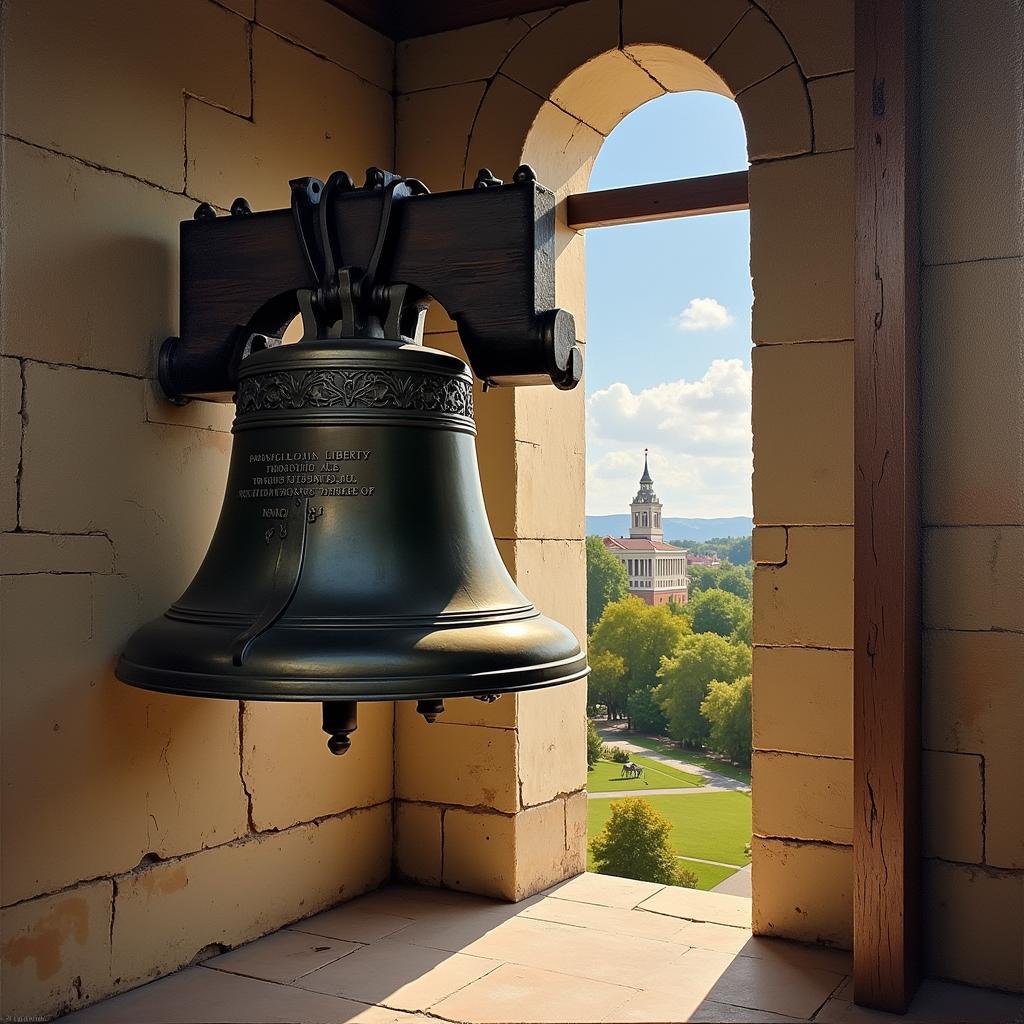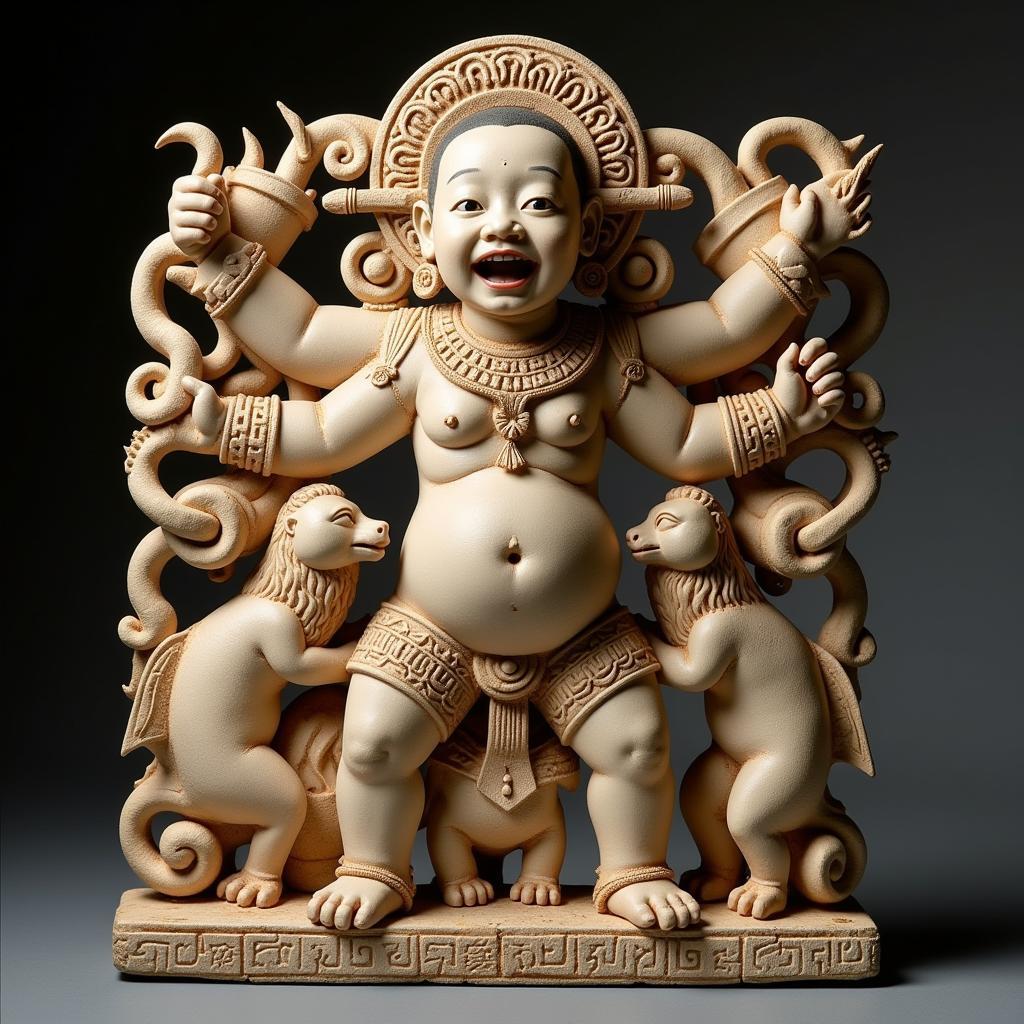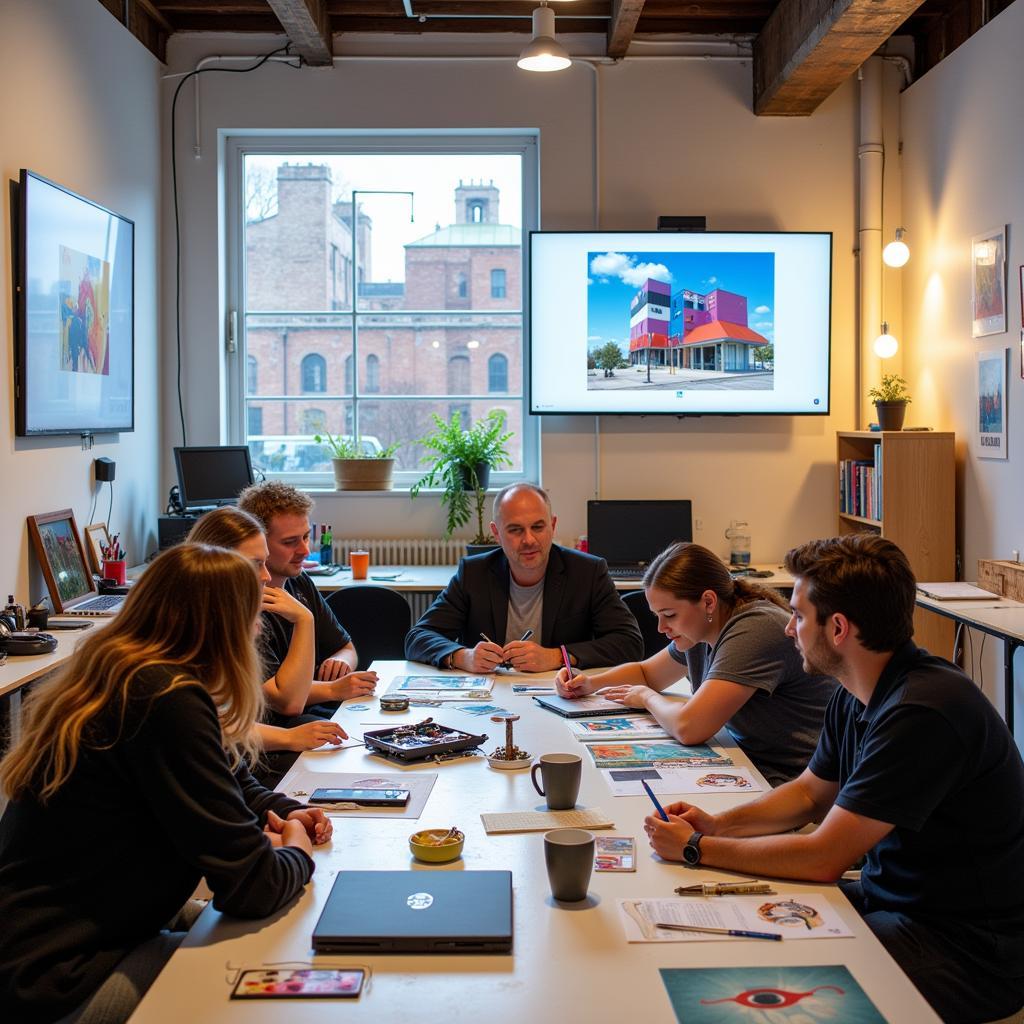Dive into the Depths of Sea Food Art
Sea Food Art is making waves in the creative world, blending the culinary and the visual into stunning displays. From intricate oyster shell mosaics to dramatic fish sculptures fashioned from recycled materials, artists are exploring the ocean’s bounty in exciting new ways. This emerging art form not only celebrates the beauty of marine life but also raises awareness about ocean conservation. It’s a feast for the eyes and a call to action for the soul. After the Medina Art in the Park, I was particularly inspired to explore this medium.
Exploring the Ocean’s Canvas: Materials and Techniques in Sea Food Art
Sea food art embraces a vast array of mediums. Traditional methods like painting and drawing are used to depict marine life, often with a hyperrealistic approach that captures the intricate details of scales, fins, and shells. However, the true magic of sea food art lies in its innovative use of materials. Artists transform discarded fishing nets into ethereal sculptures, repurpose shells into delicate jewelry, and even carve intricate designs into dried fish skin. This resourceful approach not only minimizes waste but also adds a unique dimension to the artwork, connecting it directly to the ocean’s ecosystem.
What sets sea food art apart is the diversity of techniques employed. Think beyond paintbrushes and canvases. Artists are experimenting with everything from fish printing (gyotaku) – a traditional Japanese method of creating prints using actual fish – to meticulously arranging thousands of tiny shells into breathtaking mosaics. The possibilities are as vast as the ocean itself.
After visiting the Bloomsburg Art Festival, I was struck by the sheer variety of techniques on display, demonstrating the boundless creativity within this niche.
Why is Sea Food Art Gaining Popularity?
Sea food art isn’t just visually appealing; it also resonates with a growing awareness of environmental issues. Many artists incorporate themes of sustainability and conservation into their work, using recycled materials and highlighting the fragility of marine ecosystems. This focus on environmental responsibility adds depth and meaning to the art, appealing to a conscious audience seeking art with a purpose. The rising popularity of sea food art reflects a broader cultural shift towards appreciating and protecting our oceans. Have you seen the incredible work being done with reclaimed fishing gear? It’s truly inspiring!
Furthermore, the accessibility of sea food art contributes to its appeal. While some pieces are complex and require specialized skills, many projects, like creating simple shell ornaments or fish prints, are accessible to beginners. This inclusivity encourages participation and fosters a sense of connection with the ocean, regardless of artistic background. The Safety Harbor Art and Seafood Festival is a great place to witness this firsthand.
From Plate to Palette: Culinary-Inspired Sea Food Art
The connection between food and art has always been strong, and sea food art takes this relationship to a new level. Chefs and artists are collaborating to create edible masterpieces inspired by marine life, pushing the boundaries of culinary creativity. Think intricately carved vegetable garnishes shaped like sea creatures, or sushi platters arranged to resemble underwater scenes. This fusion of culinary and visual art creates a multi-sensory experience that tantalizes both the taste buds and the eyes. The Art from the Heart Carteret County showcases some fantastic examples of this culinary crossover.
Beyond the edible, culinary-inspired sea food art extends to paintings and sculptures that celebrate the beauty of seafood in its natural state. Artists capture the vibrant colors of freshly caught fish, the intricate textures of shellfish, and the glistening translucency of squid. These artworks serve as a visual reminder of the abundance and diversity of the ocean’s bounty.
Getting Started with Your Own Sea Food Art
Ready to dive in? Start by exploring the resources available online and in your local community. Many art centers offer workshops on sea food-themed projects, and online tutorials can guide you through various techniques. Don’t be afraid to experiment! The Jackson Wyoming Art Festival might offer some inspiration for your own artistic journey.
Conclusion
Sea food art is a vibrant and evolving art form that celebrates the beauty, diversity, and fragility of our oceans. From intricate shell mosaics to powerful sculptures made from recycled materials, this genre offers a unique lens through which to appreciate the marine world. Whether you’re an experienced artist or a curious beginner, exploring sea food art is a rewarding experience that can deepen your connection with the ocean and inspire your creativity.
FAQ
-
What is sea food art?
Sea food art encompasses various artistic expressions inspired by marine life and often utilizes materials from the ocean. -
Where can I find sea food art?
You can find sea food art in galleries, online marketplaces, and at art festivals. -
How can I get started with sea food art?
Start by exploring online tutorials and local art centers offering workshops. -
What materials are commonly used in sea food art?
Shells, fish bones, fishing nets, and driftwood are common materials. -
Is sea food art expensive?
The price of sea food art varies depending on the artist, materials, and complexity of the piece. -
What are some popular sea food art techniques?
Fish printing, shell mosaics, and sculptures from recycled materials are popular techniques. -
How does sea food art promote ocean conservation?
Many sea food artists use recycled materials and incorporate themes of sustainability into their work.
For further assistance, contact us at Phone: 02462573573, Email: [email protected] or visit us at Savico Megamall, 7-9 Đ. Nguyễn Văn Linh, Gia Thụy, Long Biên, Hà Nội 10000, Việt Nam. We have a 24/7 customer support team.


